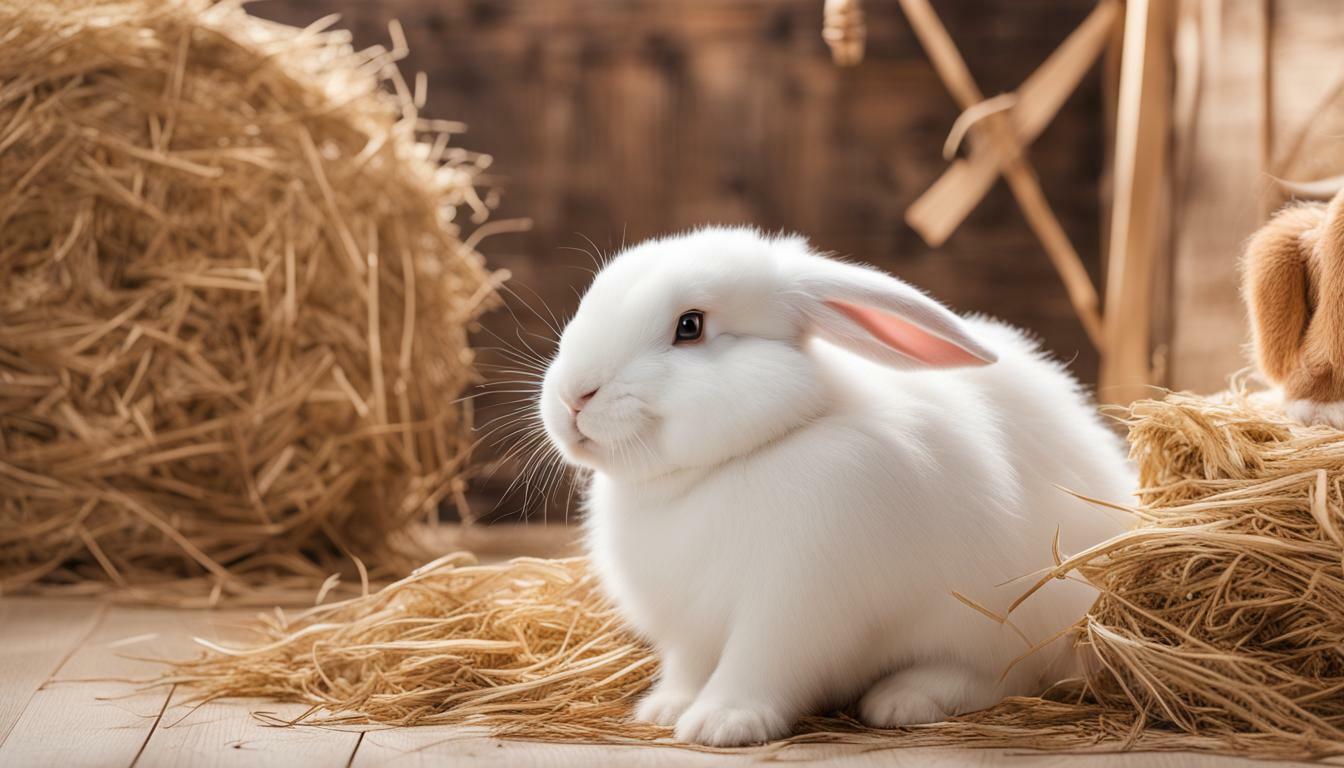How Often to Change Rabbit Bedding for a Healthy Pet

Table of content:
Keeping your rabbit healthy and happy starts with having a clean cage. But how often should you clean a rabbit’s cage? This is a common question for new rabbit owners. Proper cage cleaning is essential for your bunny’s health and wellbeing. In this article, we’ll discuss everything you need to know about cage cleaning frequency and maintaining good rabbit hygiene.
How Often to Clean a Rabbit Cage
There are a few factors to consider when deciding how frequently your rabbit’s cage needs cleaning:
- Type of bedding – More absorbent substrates like paper or aspen shavings require less frequent changes than materials like straw or newspaper. Highly absorbent wood pellets can go 1-2 weeks between changes.
- Number of rabbits – More rabbits mean more waste and quicker buildup of ammonia from urine. Clean more often for multiple bunnies.
- Litter habits – Rabbits with good litter box habits create less mess requiring less frequent cleaning. Messy rabbits need more cleaning.
- Cage size – Larger cages can go longer between full cleanings than smaller cages.
- Spot cleaning – Regular scooping of litter boxes and removal of waste means less frequent deep cleaning.
Given these factors, here are some general guidelines:
- Daily – Scoop litter boxes, remove uneaten fresh food and droppings.
- 1-2 times per week – Thorough sweep and litter change, wipe surfaces, wash dishes.
- Every 1-4 weeks – Full cage cleaning with new bedding.
No matter what, you should do a full cleaning at least once a month, including sanitizing all accessories and surfaces.
Signs Your Rabbit Cage Needs Cleaning
Don’t just rely on a schedule. Be observant of signals that your bunny’s habitat needs freshening up:
- Noticeable urine or fecal odor
- Visible feces or urine stains on cage surfaces or bedding
- Left uneaten fresh veggies or hay
- Damp, matted, or soiled bedding
- Fly or maggot infestation
If you notice any of these, it’s time for a thorough cleaning. Waiting too long between full cage cleanings allows harmful bacteria, parasites and insects to accumulate.
Dangers of a Dirty Cage
Can rabbits get sick from dirty cages? Absolutely. A dirty cage filled with waste and odor puts your rabbit’s health at risk:
- Diarrhea – Caused by ingesting bacteria from soiled environment.
- Respiratory infection – Ammonia from urine causes lung irritation.
- Pasteurella – Common in rabbits, thrives in unsanitary conditions.
- Wet tail – Stress and unclean habitat contribute to deadly diarrhea.
- Vent disease – Urine scald and feces cause painful infection.
- Fly strike – Flies attracted to mess lay eggs on skin.
Frequent cage cleaning is crucial for limiting these illnesses in rabbits.
How to Completely Clean a Rabbit Cage
Doing a thorough periodic cleaning is important for your rabbit’s health. Here are the basic steps:
- Remove your rabbit – Place them in a safe temp space so they are not startled by cleaning.
- Discard old substrate – Remove all soiled litter, bedding and uneaten food.
- Wash dishes – Use a small amount of rabbit-safe cleaner and hot water.
- Clean surfaces – Wipe down cages, trays, toys with an animal-safe disinfectant.
- Rinse and dry everything completely.
- Apply new bedding – Add several inches of fresh substrate.
- Arrange supplies – Refill hay, add litter boxes, toys.
- Invite bunny back into the nice clean cage!
Doing a full cleaning monthly maintains a healthy environment. Always give your rabbit time to re-acclimate after cleaning.
Good Rabbit Cage Bedding
Choosing suitable cage lining is key for easy cleaning and healthy rabbits. Look for bedding that:
- Absorbs well – Keeps cage dry by locking in urine. Wood and paper work well.
- Odor control – Limit smell from waste between changes. Aspen and pine are aromatic.
- Dust-free – Prevents respiratory issues. Get dust-extracted wood shavings.
- Non-toxic – Ensure bedding is safely consumable. Avoid fluffy cotton and corncob.
Popular good options:
- Recycled paper litter or pellet bedding
- Aspen wood shavings
- Pine wood pellets
- Timothy hay or straw (spot cleaning needed)
Switching up materials can help control odor while ensuring safety. Place bedding in litter box and throughout cage.
Cleaning Tips
Follow these tips for easier and more effective rabbit cage cleaning:
- Spot clean often – Quick daily waste removal delays deep cleaning.
- Use a sifter – Scoop litter efficiently removing only soiled portions.
- Vacuum remains – Suck up debris before adding fresh bedding.
- Disinfect wisely – Use natural options like vinegar or gentle soap. Avoid strong chemicals.
- Dry thoroughly – Prevent mold and bacteria before replacing bedding.
- Don’t overdo it – Limit stress on your rabbit from too frequent disruptive cleaning.
- Wear gloves and mask – Avoid contact with waste; protect from inhaling dust and ammonia.
Proper techniques keep the workload manageable while optimizing hygiene.
Is it Bad to Clean a Rabbit’s Cage Too Often?
You want to keep your bunny’s home clean, but is there such a thing as over-cleaning their cage? Sometimes too much cleaning can cause issues:
- Removes familiar scents causing stress.
- Disturbs rabbit’s sense of security and territory.
- Can remove beneficial gut bacteria if cleaning is overly thorough.
- Wastes time and money doing full cleanings more than needed.
To avoid over-cleaning problems:
- Spot clean litter and remove waste daily.
- Do partial cleanings for lighter maintenance 1-2 times per week.
- Only do full cleanings every 2-4 weeks depending on cage size and number of rabbits.
This balanced approach keeps the cage hygienic without unnecessary disruption to your rabbits. Monitor their health and watch for signs more cleaning is needed.
Cleaning Around Your Rabbit
It’s best to remove your rabbit from the cage when doing a full cleaning. But what if you need to tidy up a bit with your bunny still inside? Here are some tips:
- Move slowly and talk soothingly to avoid startling them.
- Temporarily place in a corner pen to keep confined while cleaning other areas.
- Focus on spot cleaning the litter boxes first, then sweep up stray bits.
- If cleaning bedding, only remove soiled portions around rabbit leaving some familiarity.
- Use natural cleaning solutions that won’t disturb sensitive respiratory systems.
- Give treats during and after to reinforce positive associations.
With patience and care, you can clean small messes without evicting your rabbit every time.
Final Thoughts
Keeping your beloved bunny healthy depends heavily on maintaining good cage hygiene. Cleaning frequency depends on your specific situation but aim for full cleanings at least monthly. Daily litter duty also helps optimize cleanliness. Ensure your rabbit always has access to a clean environment and watch closely for any signs of illness potentially caused by unsanitary housing. With regular cage cleaning and disinfecting, your rabbit companion will enjoy good health and a happy home.
Welcome. I’m Adreena Shanum, the proud owner of this website, and I am incredibly passionate about animals, especially poultry. I founded adreenapets.com as a labor of love, stemming from my desire to share my knowledge and experiences with poultry enthusiasts worldwide.




